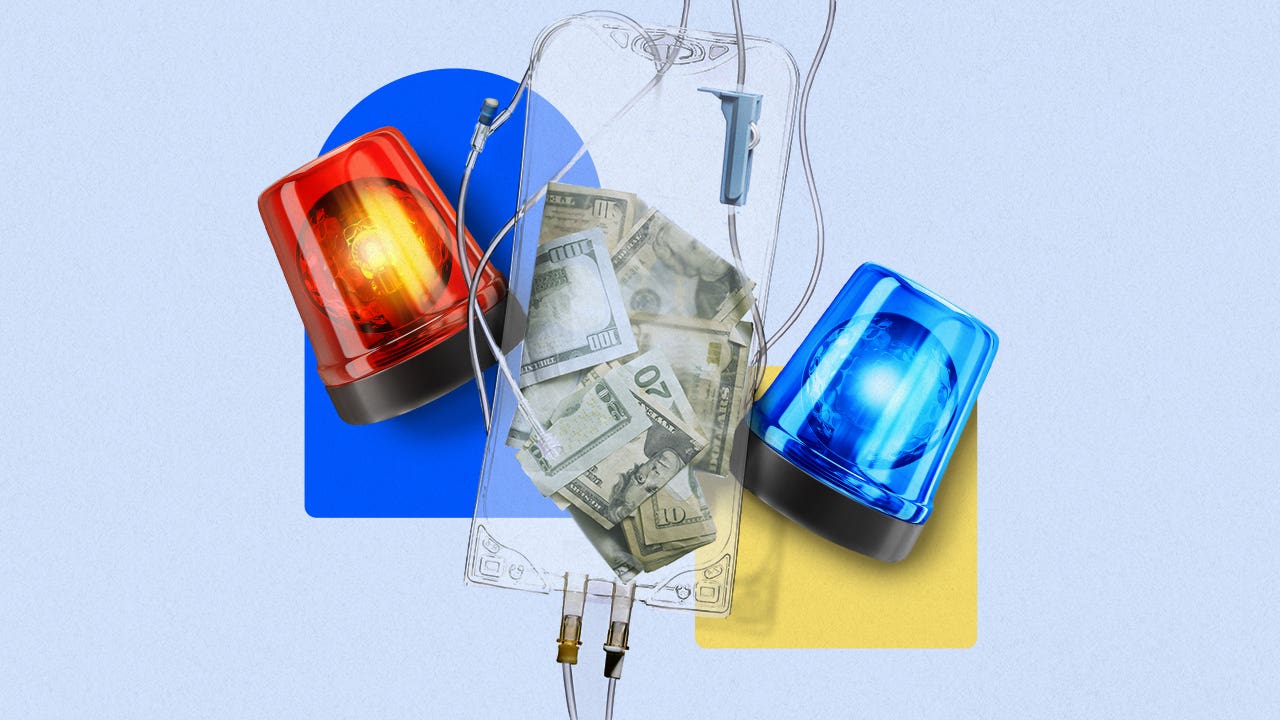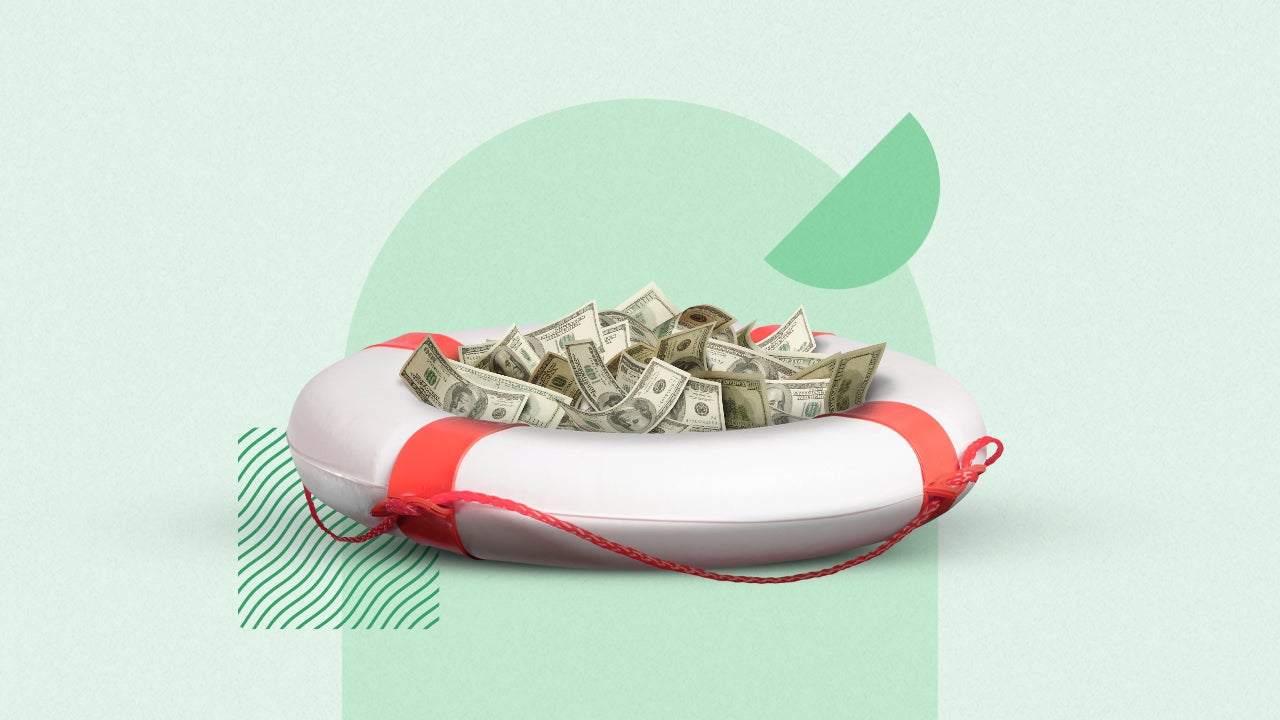When should you spend your emergency fund?

Starting an emergency fund is often highlighted as a crucial aspect of personal finance, but we don’t talk as much about when you should tap into that money.
For example, if someone faces an unexpected car repair bill, should they dip into their emergency fund or explore other financial avenues? It’s a dilemma that many individuals grapple with when confronted by financial emergencies, potentially disrupting a carefully balanced budget.
The reality is that most Americans also don’t have robust emergency funds, with 41 percent saying they couldn’t cover a $1,000 emergency expense from their savings, according to Bankrate’s 2025 Annual Emergency Savings Report. Still, personal emergencies happen. What’s important is understanding when to spend emergency funds and when to save them for when they’re truly needed.
Here are some situations where it’s necessary to withdraw money from your savings and how to protect that money as much as possible.
Emergency savings statistics
Bankrate’s emergency savings report found that:
- Only 41 percent of U.S. adults would pay for an unexpected emergency expense from their savings.
- Most people (70 percent) would be worried that, if they were to lose a primary source of income tomorrow, they wouldn’t have the emergency savings to cover their immediate living expenses.
- One-third (33 percent) of U.S. adults say they have more credit card debt than emergency savings.
- Thirty (30) percent of adults have more emergency savings than they did a year ago, and a lower percentage, 27 percent, have less.
What should you use your emergency fund for?
Emergency funds are designed to help you pay for unexpected costs or cover expenses during a loss of income.
Consider a scenario familiar to many: facing an unexpected medical emergency. Despite having robust health insurance, the unforeseen costs associated with sudden illness can quickly accumulate. These expenses, coupled with necessary time off from work for recovery, can become overwhelming.
Many U.S. adults see a reason for concern to stash money away for these unpredictable events, as 35 percent of U.S. adults are focused on both paying down debt and increasing their emergency savings at the same time, according to the Bankrate report.
Of all who say money concerns have a negative impact on their mental health, the top money concerns are rising prices and paying for everyday expenses. These are areas where emergency savings may be needed to preserve financial stability.
In moments of crisis, having an emergency fund provides more than financial relief — it offers peace of mind. Here’s a breakdown of four scenarios where dipping into your emergency savings might be a good idea to help overcome financial hardship and maintain everyday living standards.
1. Job loss
One of the biggest financial emergencies is job loss.
If you lose your job, you might need to tap into your emergency fund to cover essential expenses like housing and food. Those savings can also be used for job search-related expenses, such as attending network events or job fairs and even relocating for a new opportunity.
Money tip: Experts commonly recommend saving three-to-six months’ worth of expenses in case of emergencies.
Finding a side hustle can help supplement your emergency savings while searching for a new job. The extra income from freelance work or part-time gigs can be used to cover essential expenses, extend your emergency fund and help you build skills for future employment.
2. Income reduction
Even if you don’t lose your job, you might see your hours or salary cut. Or, some may choose to reduce the hours they work to focus on other aspects of life, such as taking care of a baby, higher education or pursuing a new venture.
Lessened income is also an experience common to gig workers and freelancers, who may have a more variable income stream by nature of their work.
In any of these cases, you might need to cover the gap by dipping into your emergency savings. First, consider ways you might cut down your expenses so your reduced budget can cover most of the essentials. Then, turn to your emergency fund for the rest.
3. Medical bills
Paying medical bills is a huge source of stress and financial distress. Even if you have health insurance, you might be on the hook for a co-pay and still might need to reach your deductible. In that case, it makes sense to turn to your emergency fund to pay some of your bills.
However, you can reduce how much you take from your savings account at one time by checking with your healthcare provider to see if you can set up a payment plan.
It’s also worth trying to negotiate medical bills. First, you’ll need to request an itemized list of the medical expenses so you can understand what you’re being charged for and use that information in the negotiation. Contact the billing department to discuss payment options, clarification on specific charges and potential discounts or financial assistance.
4. Emergency repairs
If you rely on your car to get to work, you might need to access your emergency savings to pay for a car repair. Additionally, emergency home repairs, such as a broken refrigerator or stove, may require paying for professional help or buying new appliances. Tapping your emergency money to cover these costs can be a better option than using a credit card and building up debt.
Only use the emergency savings, however, if the repair is necessary for continuing everyday life. In some cases, repairs can wait as you save up to cover them. Just make sure that it’s not something that will worsen and become more expensive if put off for longer.
Inflation has been stubbornly high and the potential impact of tariffs on prices and economic growth has introduced a heap of uncertainty. In times of uncertainty, nothing helps you sleep better at night than knowing you have that emergency fund to absorb unplanned expenses or cushion income variability.— GREG MCBRIDE, CFA, BANKRATE CHIEF FINANCIAL ANALYST
What you shouldn’t spend your emergency fund on
Be careful of what you label an emergency. Try to avoid using your savings on nonessential items and services, such as a vacation or entertainment expenses.
Here’s a good barometer: Consider whether you actually need something to survive. If not, think twice before using emergency fund money for the purchase.
If you use your emergency fund now, you might not have access to the money later — when the need becomes dire. Four examples of situations that an emergency fund shouldn’t be used for are:
- Impulse purchases: Using your emergency fund on luxury items or non-essential purchases undermines its purpose. Keep your emergency savings in a separate account, such as a checking account, to help curb the temptation of impulse buying.
- Vacations and travel: While travel is enriching, it requires some advanced planning. Save for travel expenses separately from emergency savings.
- High-interest debt repayment: Using your emergency fund to settle high-interest debts may leave you vulnerable in true emergencies. Prioritize creating a debt repayment plan within your budget and explore options for refinancing or negotiating lower interest rates.
- Investments: Investing your emergency fund in volatile assets jeopardizes its accessibility when needed most. It’s best to keep an emergency fund in a low-risk, liquid account to ensure quick access and that funds won’t be lost.
One strategy for limiting how much you dip into emergency savings is to make an emergency budget that cuts your spending to a minimum. Review your spending from the past few months and then identify the least important expenses. Those are costs that can be cut in the event of an emergency and reduce your overall cash outlay. This can help you reduce the chances that you’ll turn to your savings account for nonessential costs.
How to reduce what you take from your emergency fund
When you’re facing financial hardship, whether it’s from job loss, medical bills or some other issue, it’s important to look for a way to stretch your emergency savings for as long as possible.
Creating an emergency budget can be one step toward making your money last longer. But there are a few other things you can do as well:
- Apply for unemployment benefits: If you lose your job, immediately apply for unemployment benefits. Those benefits might take a while to materialize, which is why it’s so important to apply, even as you look for another job. Receiving the benefits can help reduce how much you rely on your emergency fund.
- Look into community resources: Your community is often a great place to turn in times of need. For example, many cities and towns have a food bank to help you reduce the need to tap into your emergency fund to buy groceries. Additionally, there might be emergency utility and housing assistance in your community. Reach out to local agencies and nonprofits to see if you qualify.
- Talk to your creditors: Depending on the situation, you might be eligible for some degree of forbearance. Keep in mind that your interest will still accrue, though, and eventually, you’ll have to get up to speed or create a repayment plan.
- Get help from friends and family: In some cases, you might be able to get help from friends and family in a pinch. Of course, that means you need to be ready to return the favor later if they fall on hard times.
- Turn to the gig economy: Gig work or a side hustle, such as delivering food or running a blog, can increase your sources of income. The extra income can go toward paying for some of the essentials, reducing your need to withdraw money from your emergency fund.
If you can find other ways to keep from tapping your emergency fund as frequently, that can be a big help and reduce the need to rebuild as much.
How to rebuild your emergency fund
Now that you’ve used some of your savings, it’s time to consider how to rebuild your emergency fund. It will take time to get the fund to amount to three to six months’ worth of expenses, but if you get into effective savings habits, it can be done within a year or so. Here are some tips to follow when rebuilding your savings.
- Start small: You probably can’t replace the money you use at one time. It’s fine to start small. Figure out how much you can put in each week — even if it’s $5.
- Increase the amount you set aside: As your finances stabilize, look for ways to increase the amount you set aside. If you find a new job, you might be able to increase your contributions even faster. But make it a goal to increase what you set aside incrementally.
- Make it automatic: Set up automatic transfers so you don’t have to think about it. Regular transfers can help you begin to rebuild your emergency fund without having to remember to make it happen.
- Use windfalls: Build up your emergency savings faster by applying windfalls toward your fund. If you get a tax refund, a bonus at work or some other unexpected money, use a portion of it to replenish your emergency fund.
- Keep funds in a high-yield savings account: Storing your emergency fund in an account that pays a top APY can boost earnings and help you replenish used savings faster.
Frequently asked questions
-
One popular method for quickly building up savings is called the 30-day rule. With this method, you withhold from making any nonessential, impulse purchases and deposit the amount you would have paid for that purchase into your savings account. Doing so can help you better understand your spending habits, show you areas for saving and serve as a short-term plan for saving.
-
Experts often recommend the 50/30/20 rule for making a budget. It means that 50 percent of your post-tax income goes to essentials (such as rent and food), 30 percent goes to nonessentials (such as entertainment and dining out) and 20 percent goes toward savings.
-
There are many money-saving apps that come with features such as automated saving, digital savings envelopes and games that can improve financial habits. Some popular examples of money-saving apps include Oportun and Qapital.
-
Most financial experts say you should have enough money in your emergency savings fund to cover three to six months’ worth of living expenses. Review your budget and determine what expenses to account for when determining this amount. The exact amount may vary depending on your type of work, household size and economic conditions.






